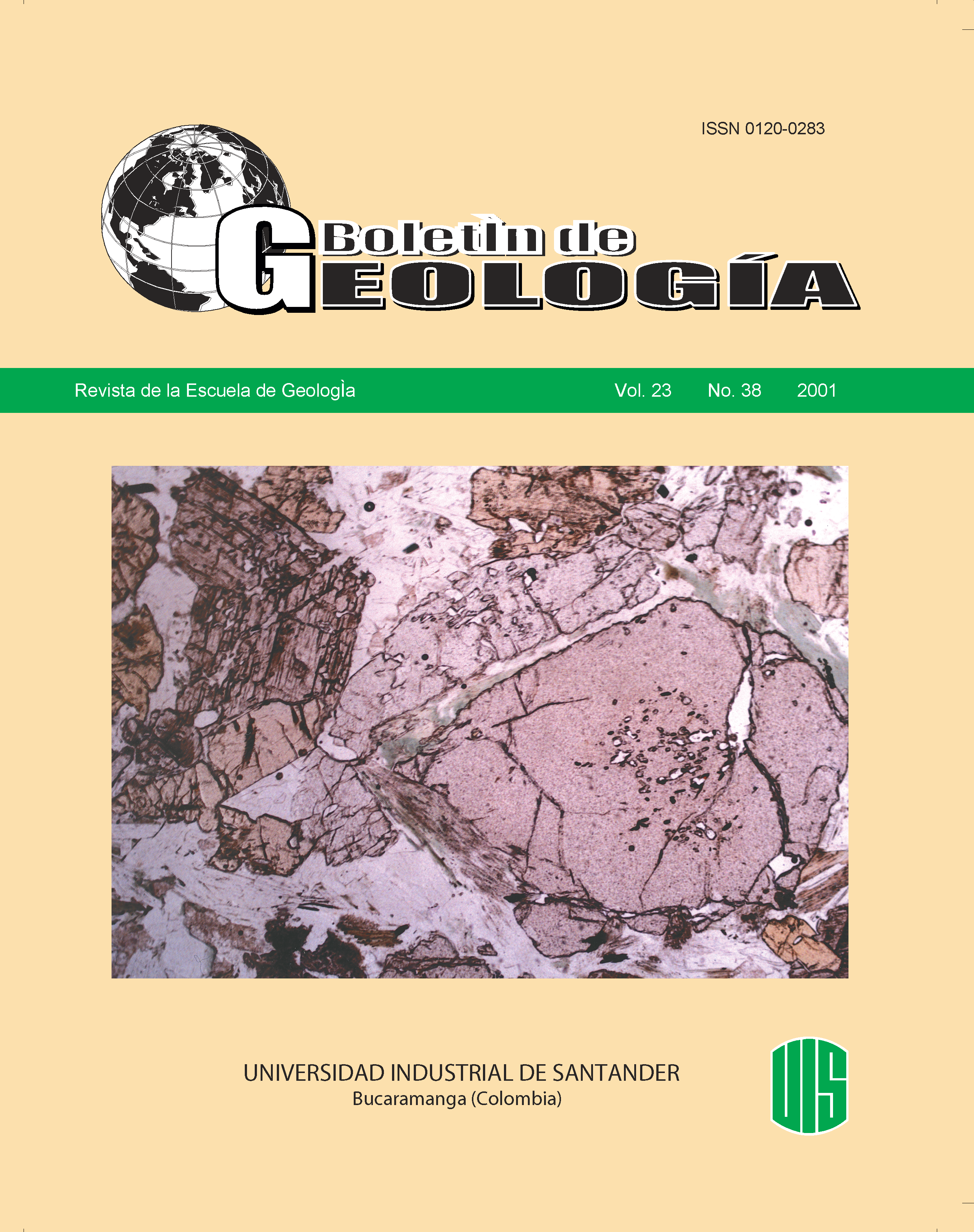Estudio de los fluídos hidrotermales asociados a las mineralizaciones de fluorita. Sector Cepitá-Pescadero, Macizo de Santander
Published 2001-10-02
Keywords
- Fluorite,
- fluid inclusions,
- hydrocarbons,
- Santander Massif
How to Cite
Abstract
The fluorite veins located in the marginal zones of the Pescadero Pluton (Santander Massif) have been formed in an epithermal environment, during a hydrothermal event occurred in a very late stage with respect to the formation of the pluton. The microthermometric anlyses in fluid inclusions have let to identify a fluid mainly compossed by H2O+NaCl+CaCl2, with homogenization temperatures (Th) between 110 and 130ºC, which is responsible of the formation of these mineralizations. The presence of organic compounds, identified principally along microfractures in the fluorites, only can be explained in a fragile deformation context, where the microfractures net favored the descense of hydrocarbons generated in the overlaying Cretacic rocks, at a late stage with respect to the formation of the fluorites.
